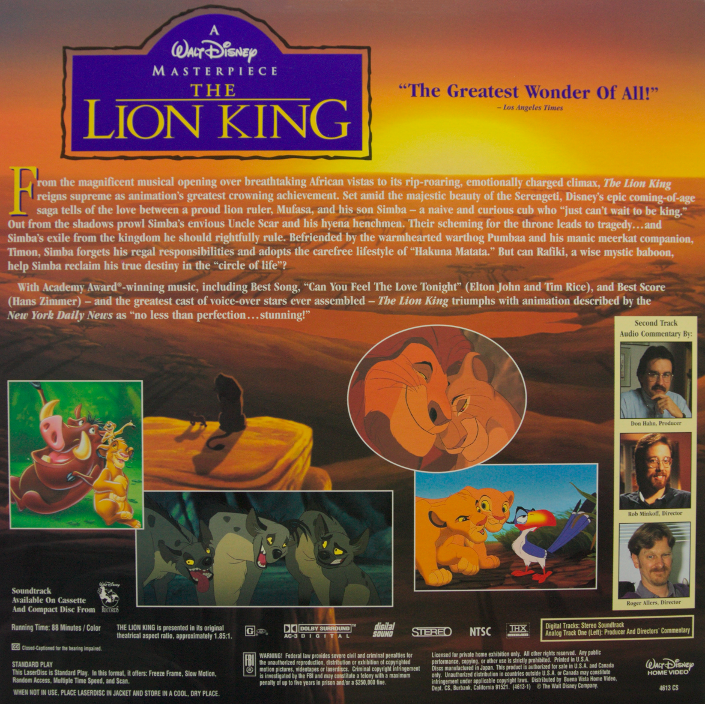
“Everybody thought that was horrible,” artistic coordinator Randy Fullmer said. In a television interview, Jeffrey Katzenberg, then-head of Disney’s motion pictures division, gloated about the potential for Pocahontas with little mention of The Lion King. Lion King was left with a group of untested artists, and friendly competition brewed between both creative teams. Around the same time, Pocahontas had also gone into production, taking Disney’s most experienced animators with it. Initial production began in 1988, but a couple years later, the movie changed leadership, with Allers and Minkoff replacing George Scribner.

The Lion King didn’t start out as a Disney darling. In turn, the nostalgia for the original is only growing. But as many critics have breathlessly pointed out, something is missing in the 2019 iteration. Twenty-five years later, The Lion King has returned ( not like that), yet again as an expression of Disney’s technological strength: a genuine achievement in photorealistic animation. At the same time, the movie served as evidence of Disney’s desire to try new things, and to push the technical boundaries of filmmaking. When all was said and done, The Lion King breathed genuine human emotion into a story that, while epic, featured animals only. “When you forget you’re watching hand-drawn artwork, it’s quite a magical thing.”

“We were talking about how to it so that people would be transported in a way that they hadn’t been transported in an animated feature before,” the movie’s artistic supervisor, Daniel St. Over three years, its creators faced numerous obstacles but combined to produce a morality play that popped with distinct, hand-drawn African themes, ultimately becoming a technical and philosophical feat. Thanks to an underdog team of animators, the movie told an engrossing story without the safety of source material-the first time in Walt Disney Animation Studios history. The new version, now in theaters, captures a stunning authenticity, while simultaneously making many viewers nostalgic for the original animated feature’s colorful, expressive, and emotional artwork.

Six months before The Lion King hit theaters in 1994, producers used this prologue for the movie’s first trailer, a genius tactic used 25 years later for Disney’s photorealistic remake.


 0 kommentar(er)
0 kommentar(er)
